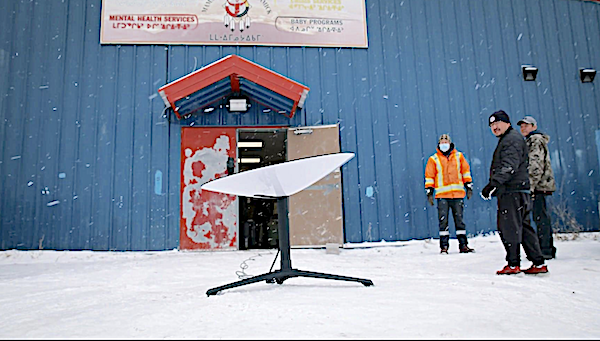
On a clear blue Florida Friday, February 21 at 10:19 a.m. ET, Falcon 9 launched 23 Starlink satellites, including 13 with Direct to Cell capabilities, to low-Earth orbit from Space Launch Complex 40 (SLC-40) at Cape Canaveral Space Force Station in Florida. Photos by Satnews.

This was the 21st flight for the first stage booster supporting this mission, which previously launched CRS-26, OneWeb Launch 16, Intelsat IS-40e, O3b mPOWER, Ovzon 3, Eutelsat 36D, Turksat 6A, Maxar 2, SXM-9, and now 12 Starlink missions.
SpaceX to launch Starlink Group 12-14 smallsats including Direct to Cell on Friday

SpaceX is targeting Friday, February 21 for a Falcon 9 launch of 23 Starlink satellites, including 13 with Direct to Cell capabilities, to low-Earth orbit from Space Launch Complex 40 (SLC-40) at Cape Canaveral Space Force Station in Florida. Liftoff is targeted for 10:19 a.m. ET, with backup opportunities available until 10:25 a.m. ET. If needed, additional launch opportunities are also available on Saturday, February 22 starting at 6:17 a.m. ET.
The forecast calls for a temperature of 60°F, scattered clouds, 34% cloud cover and a wind speed of 17mph.
A live webcast of this mission will begin about five minutes prior to liftoff, which you can watch on X @SpaceX. You can also watch the webcast on the new X TV app.
This is the 21st flight for the first stage booster supporting this mission, which previously launched CRS-26, OneWeb Launch 16, Intelsat IS-40e, O3b mPOWER, Ovzon 3, Eutelsat 36D, Turksat 6A, Maxar 2, SXM-9, and 11 Starlink missions. Following stage separation, the first stage will land on the A Shortfall of Gravitas droneship, which will be stationed in the Atlantic Ocean.
